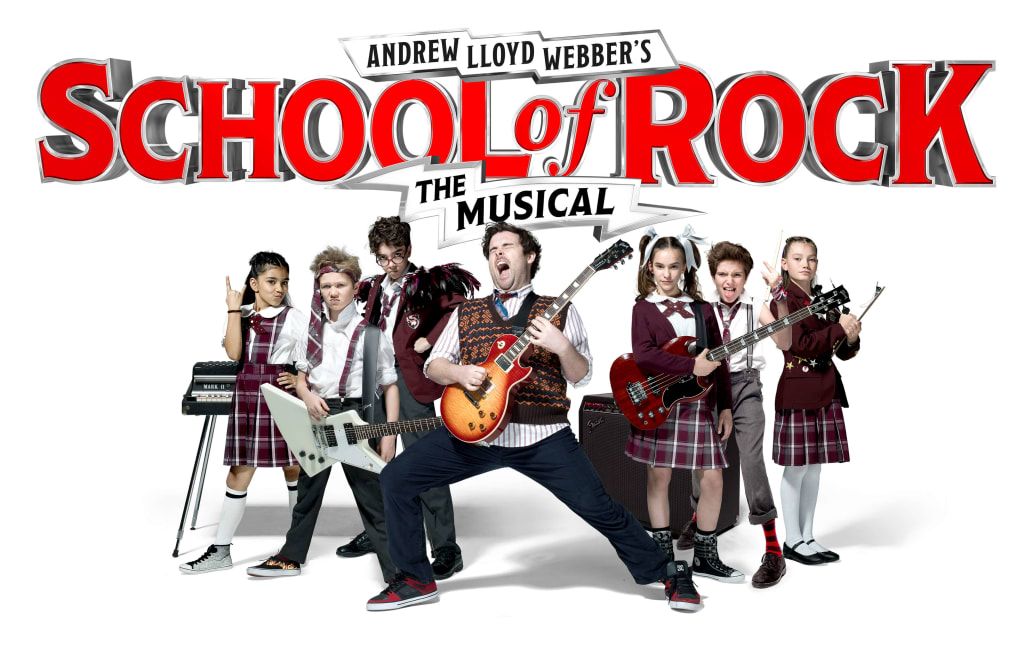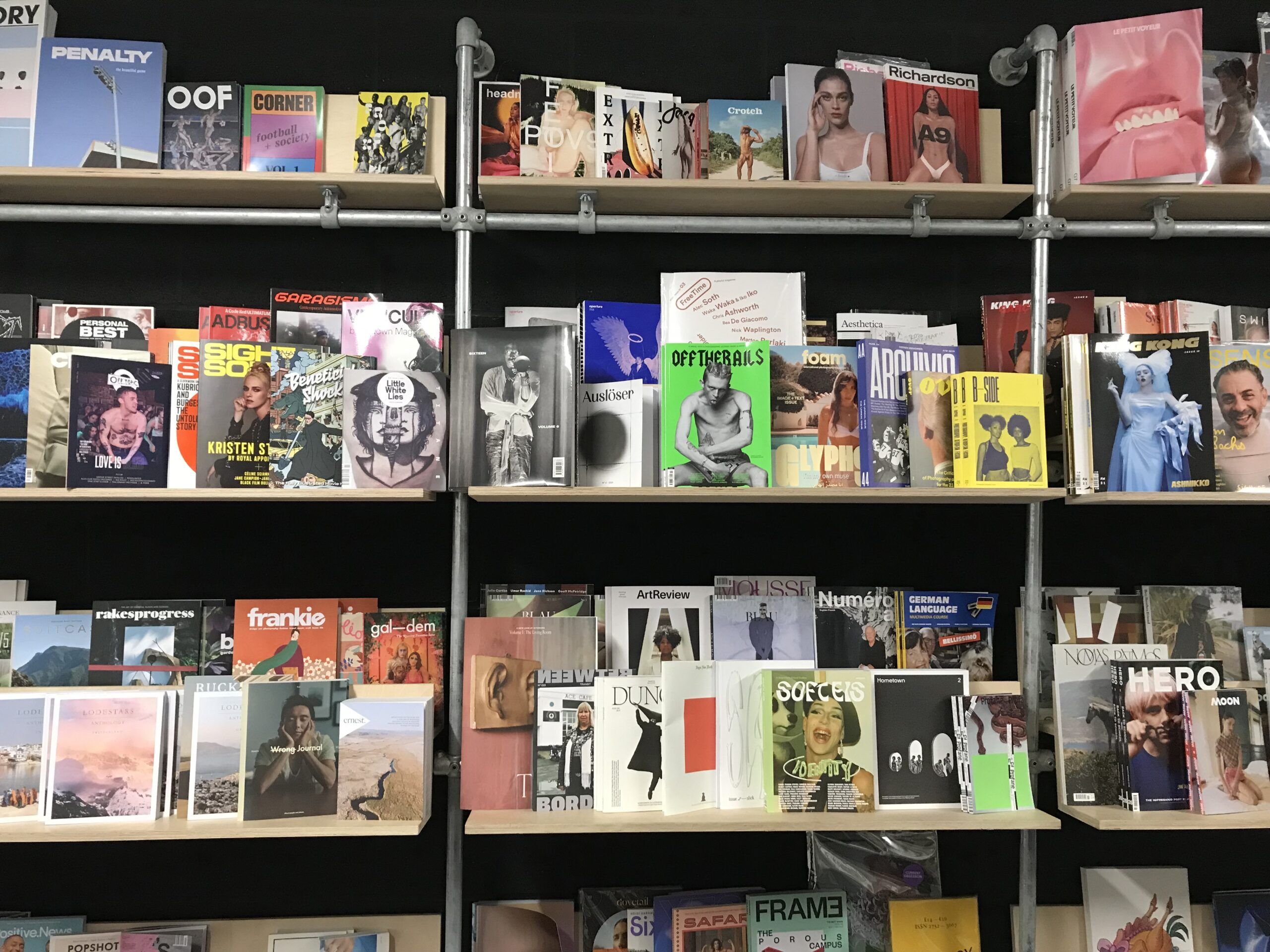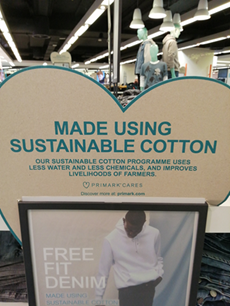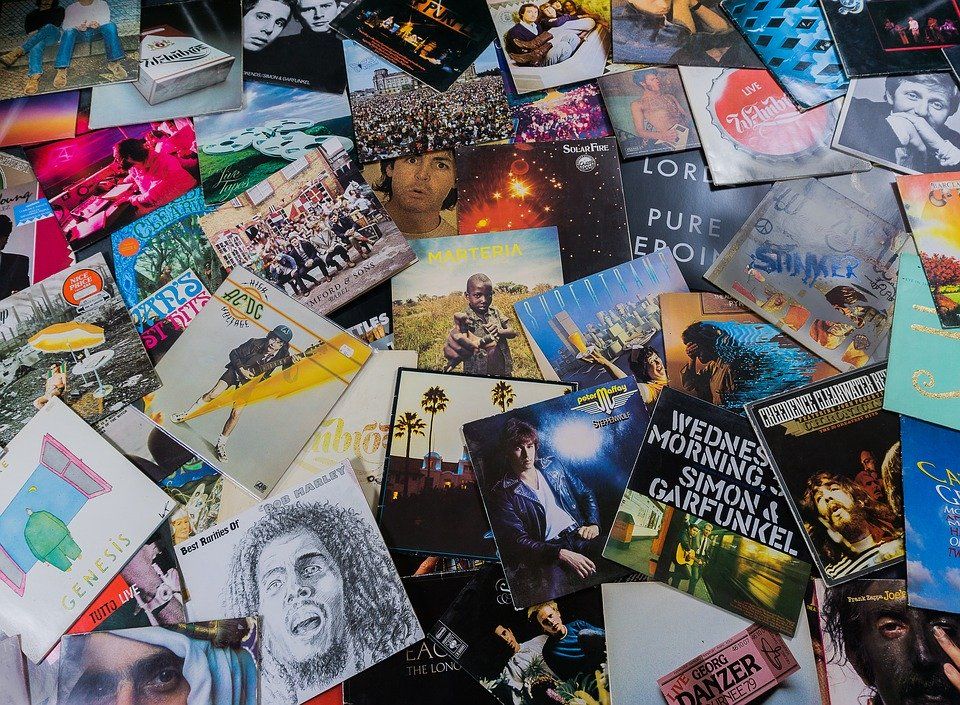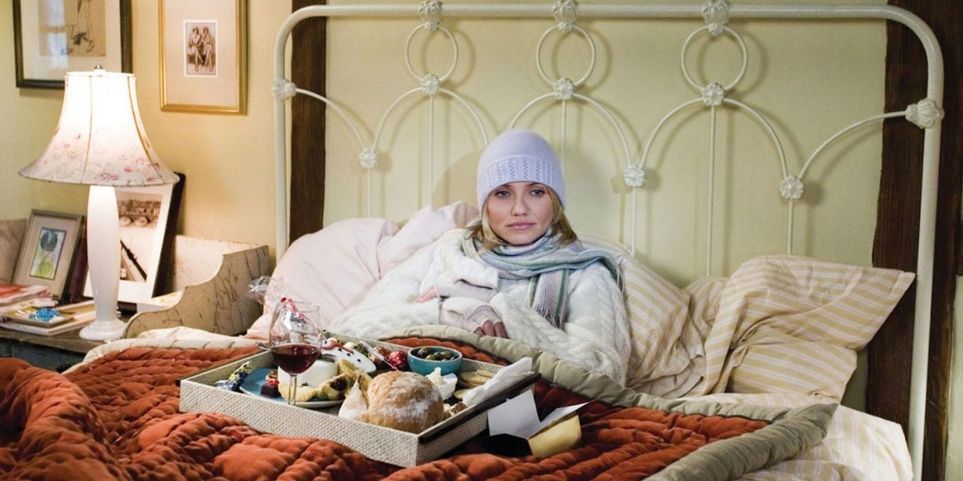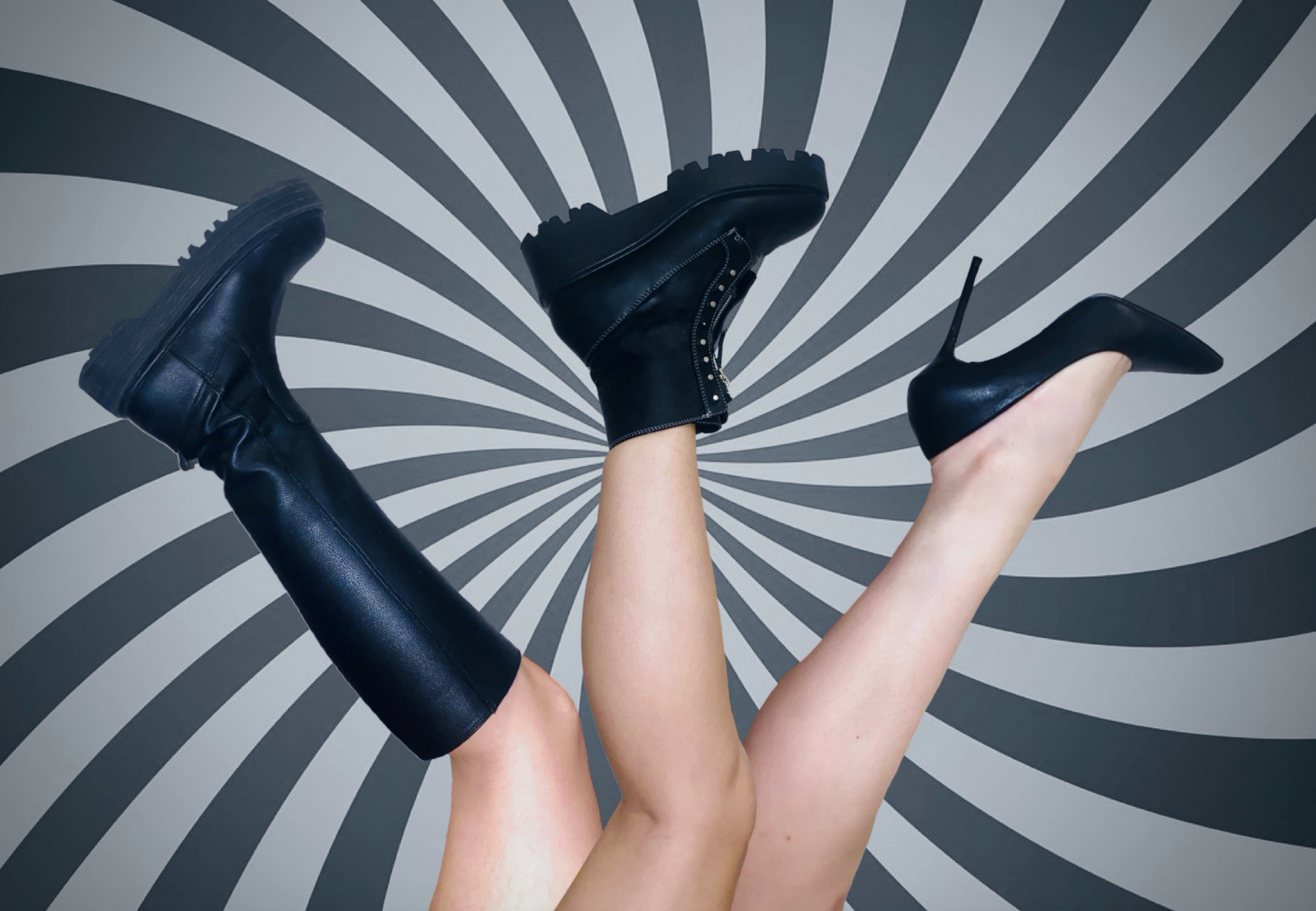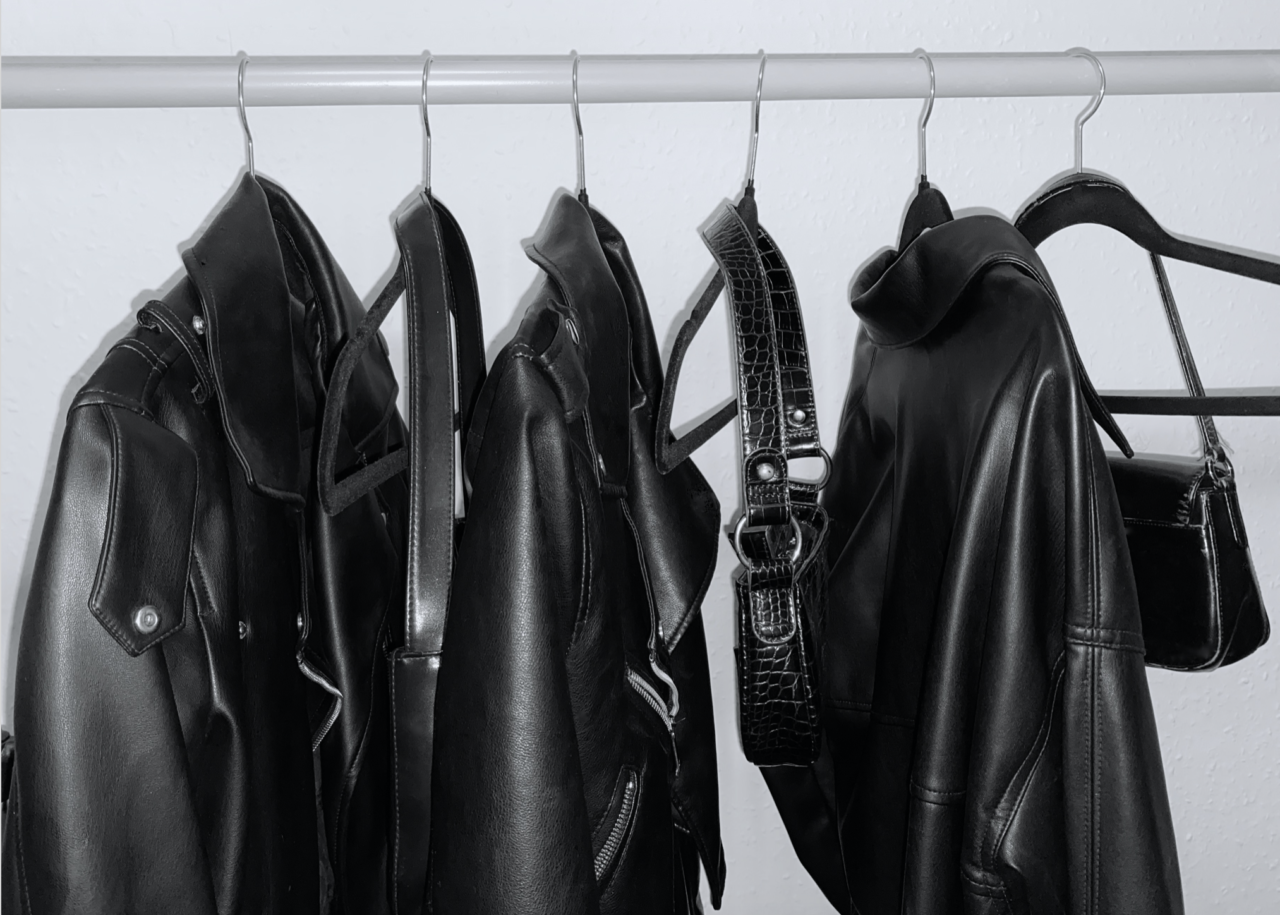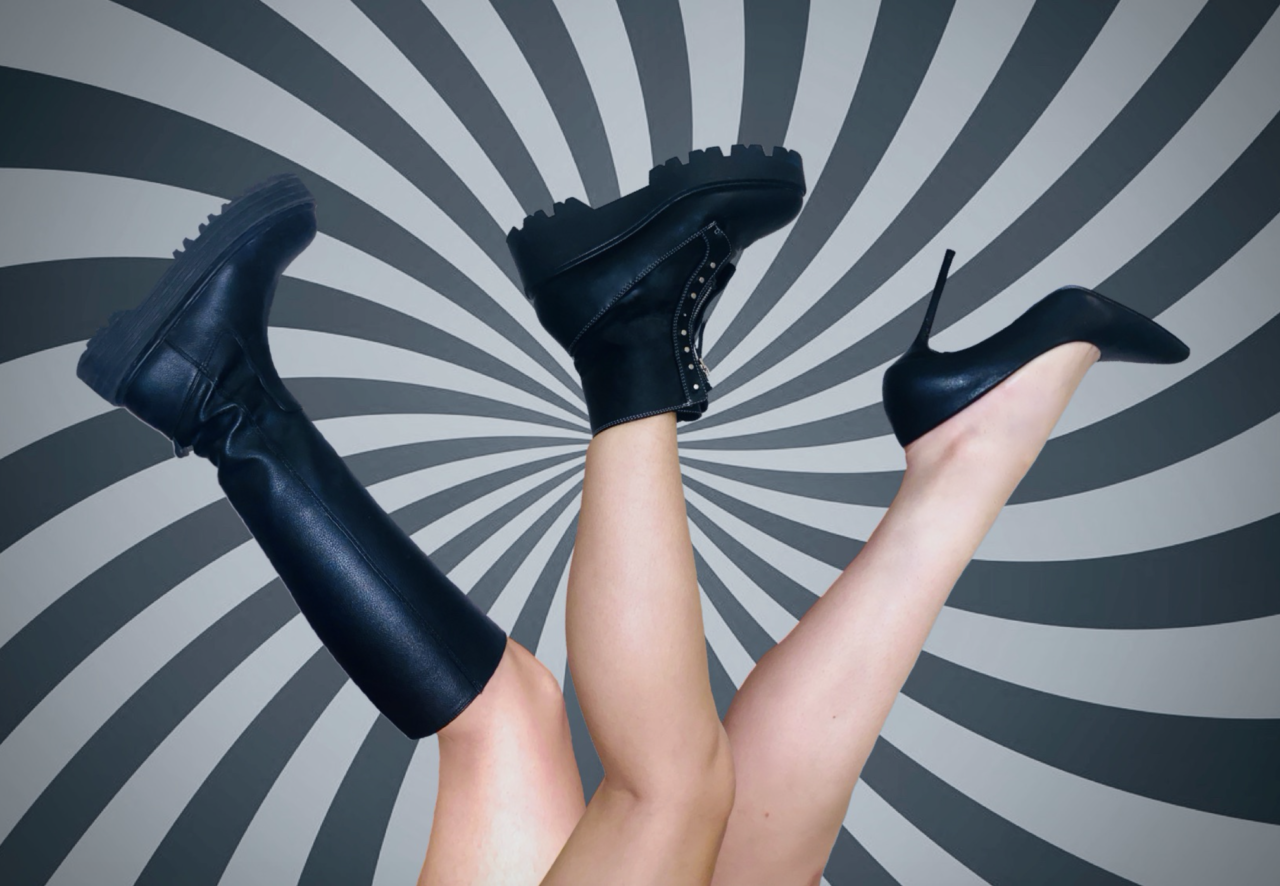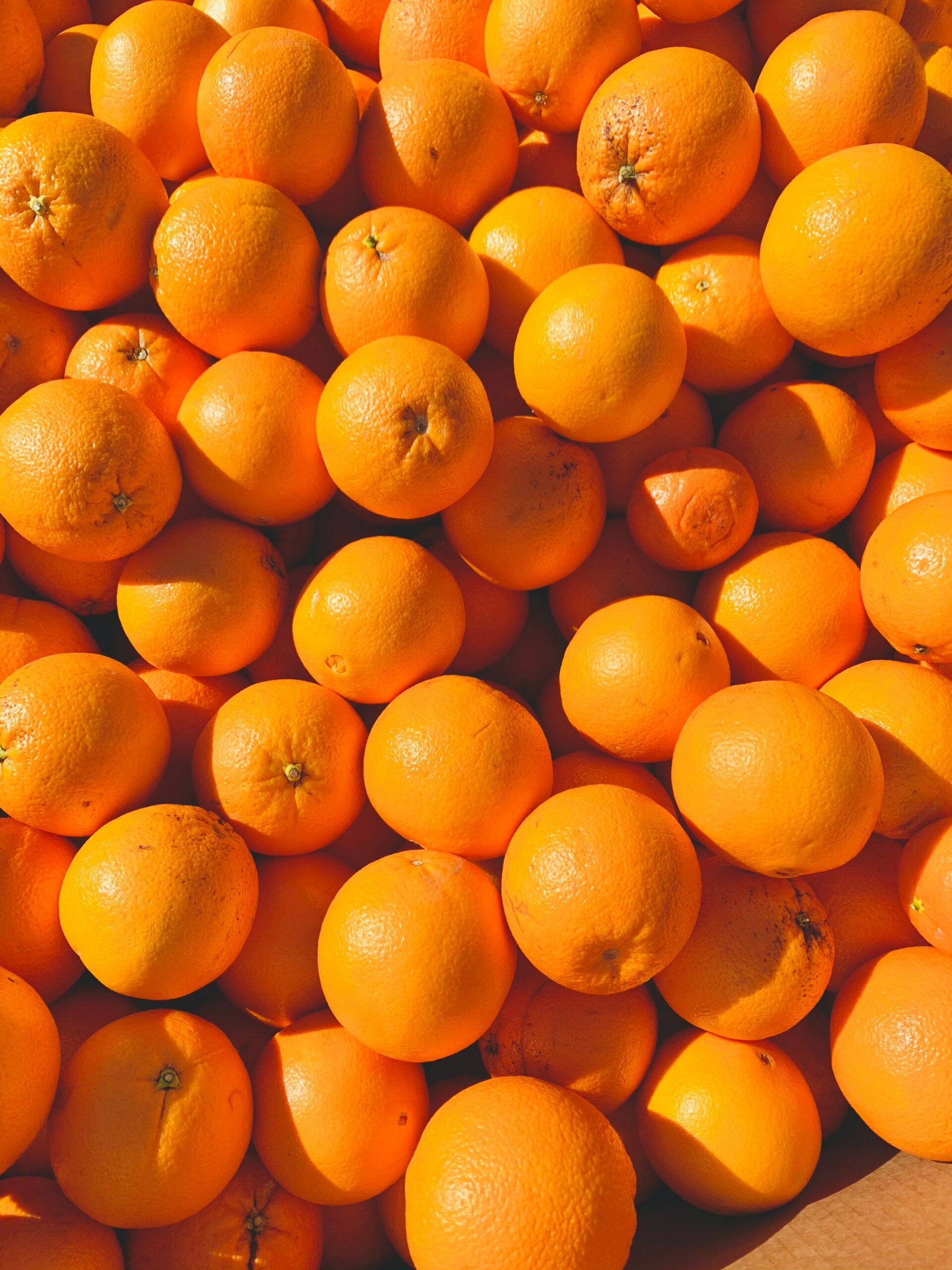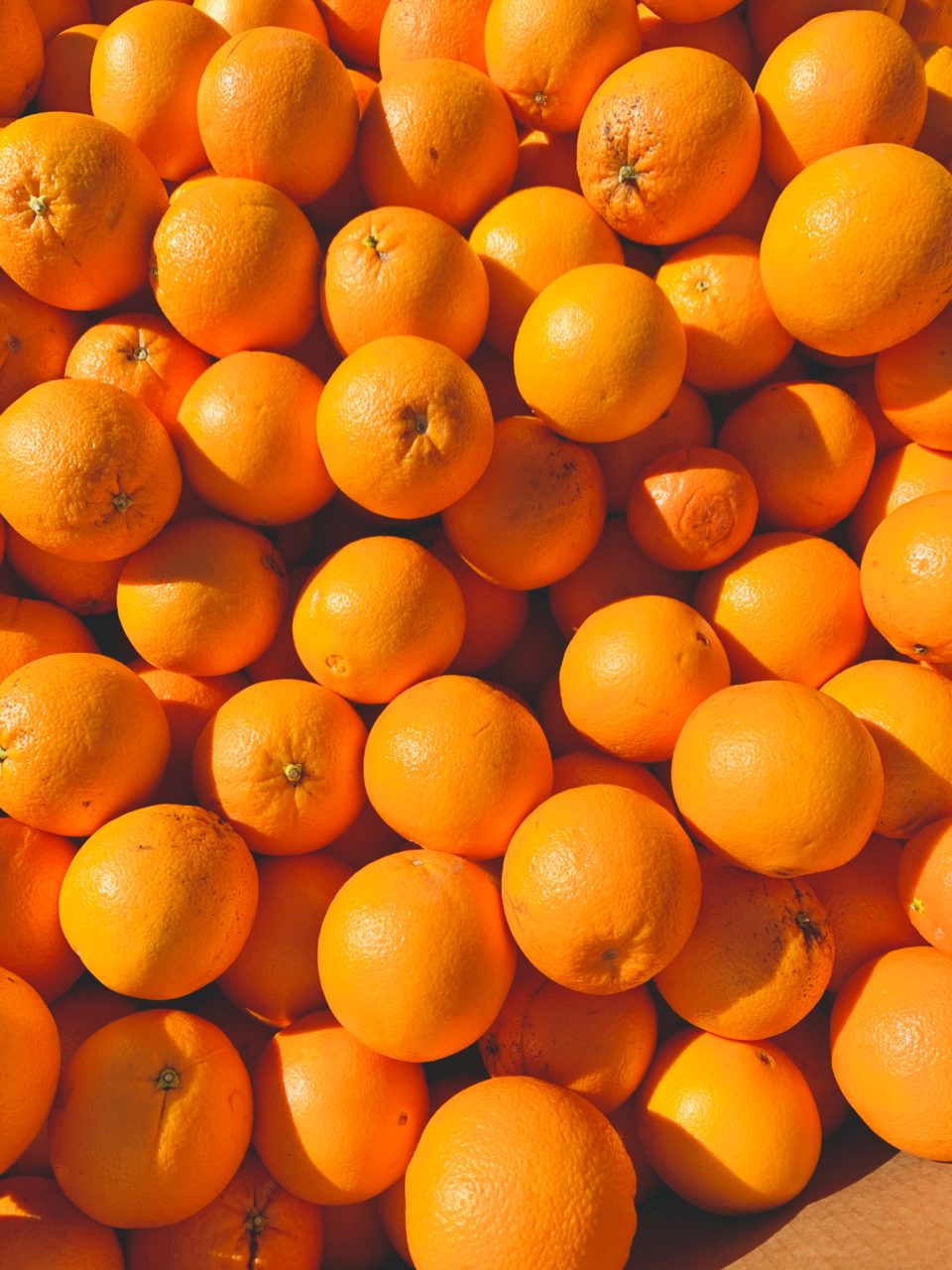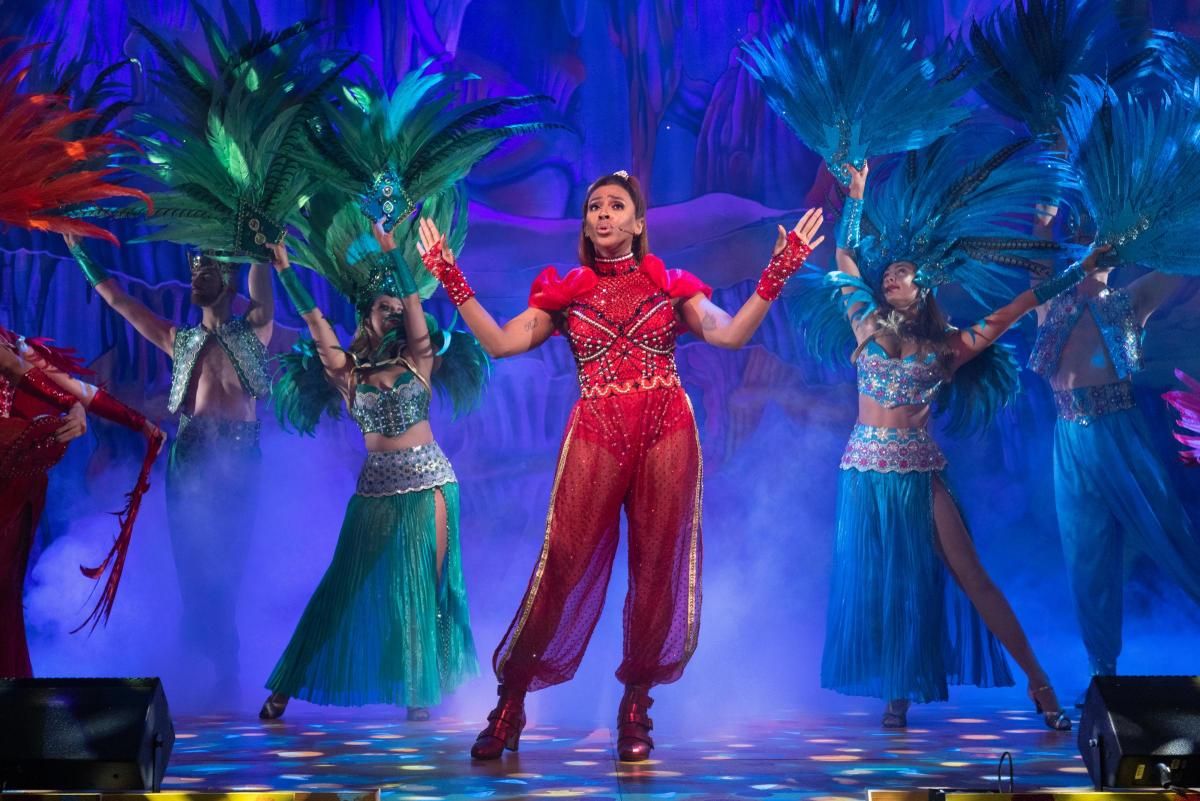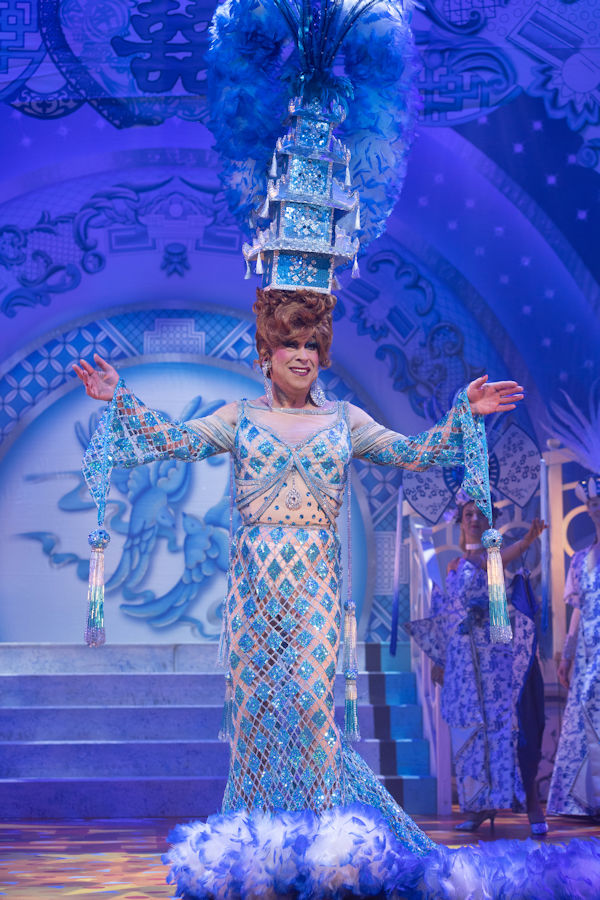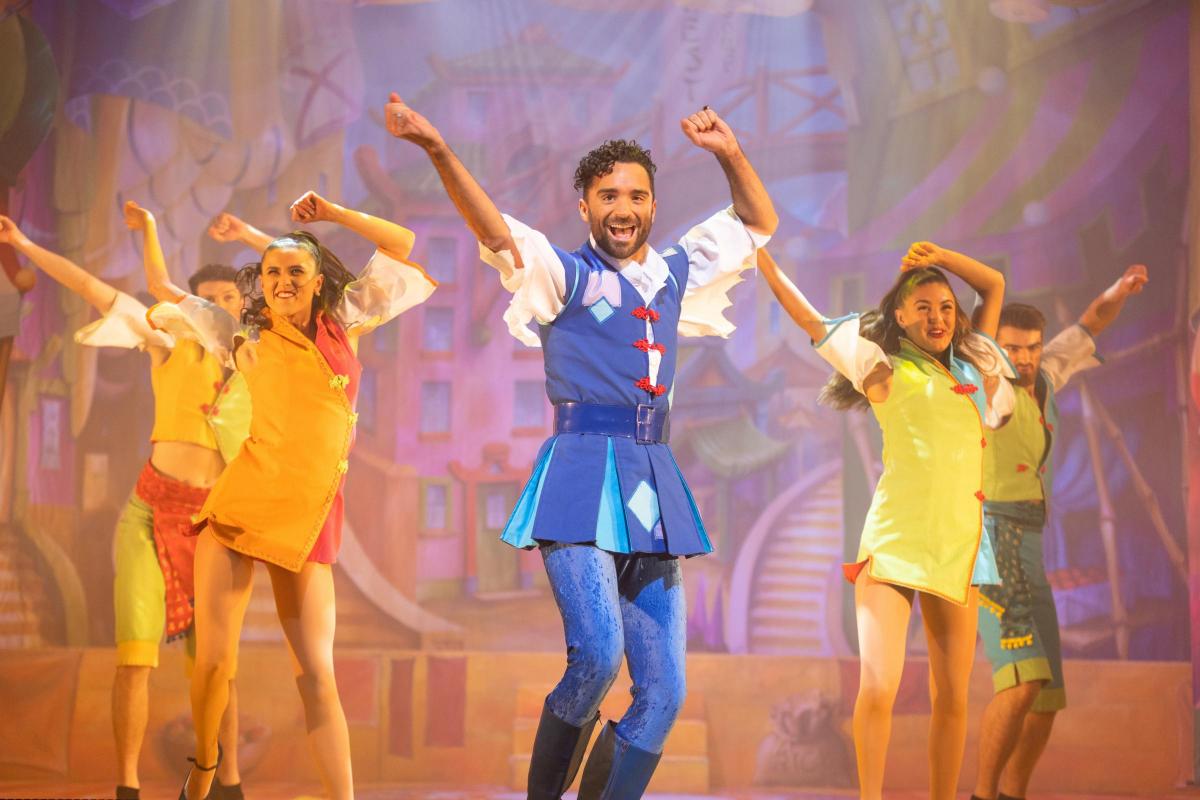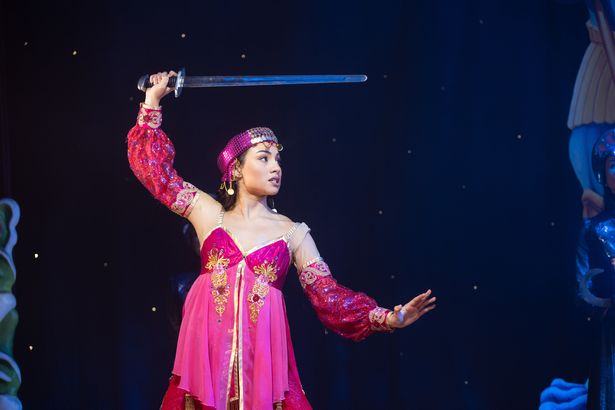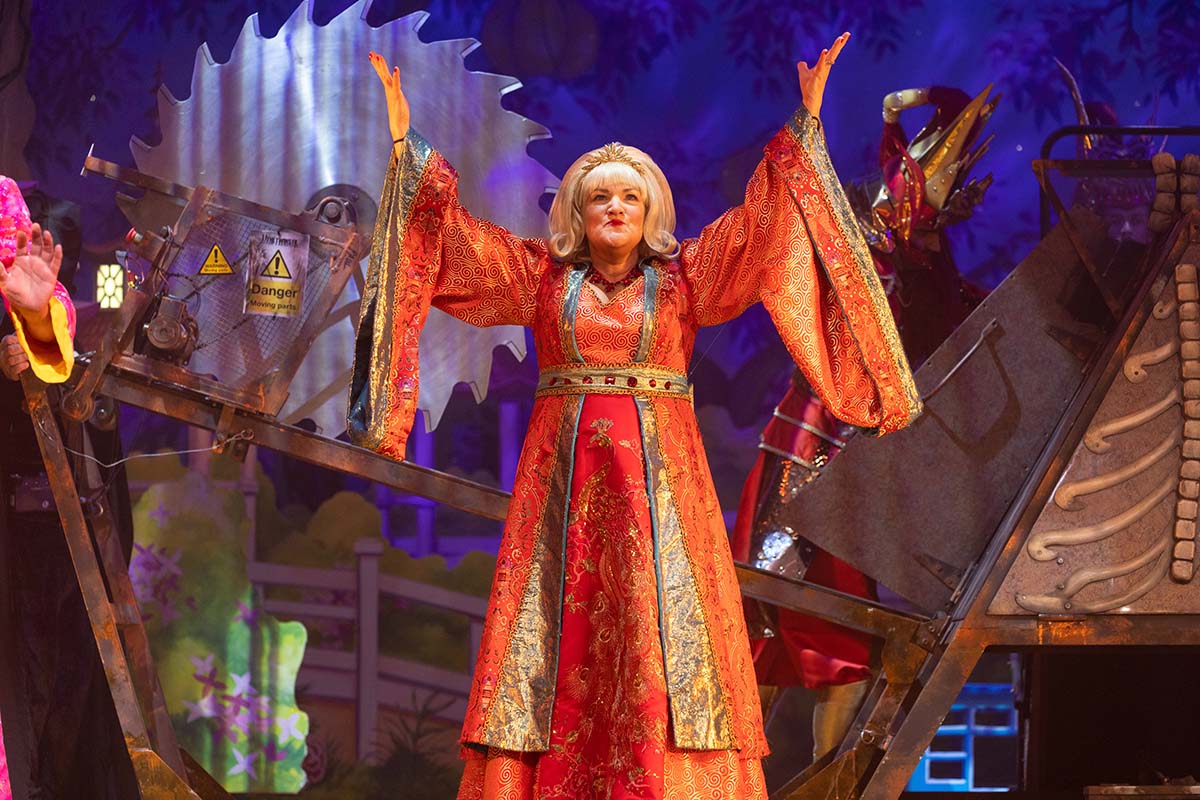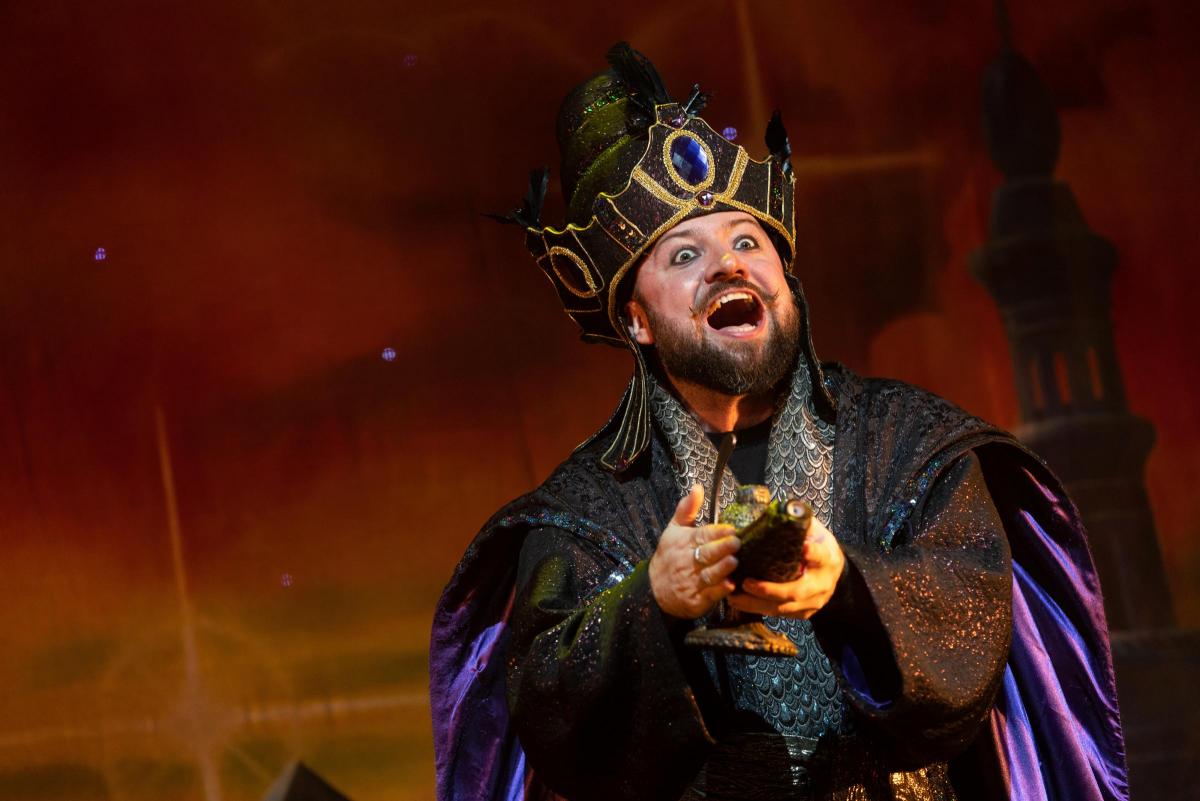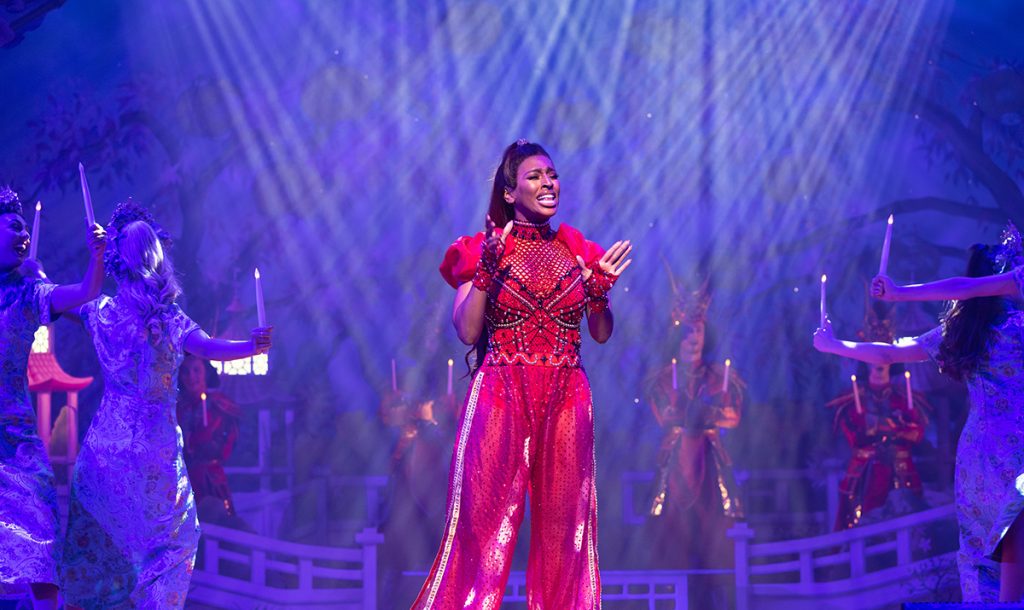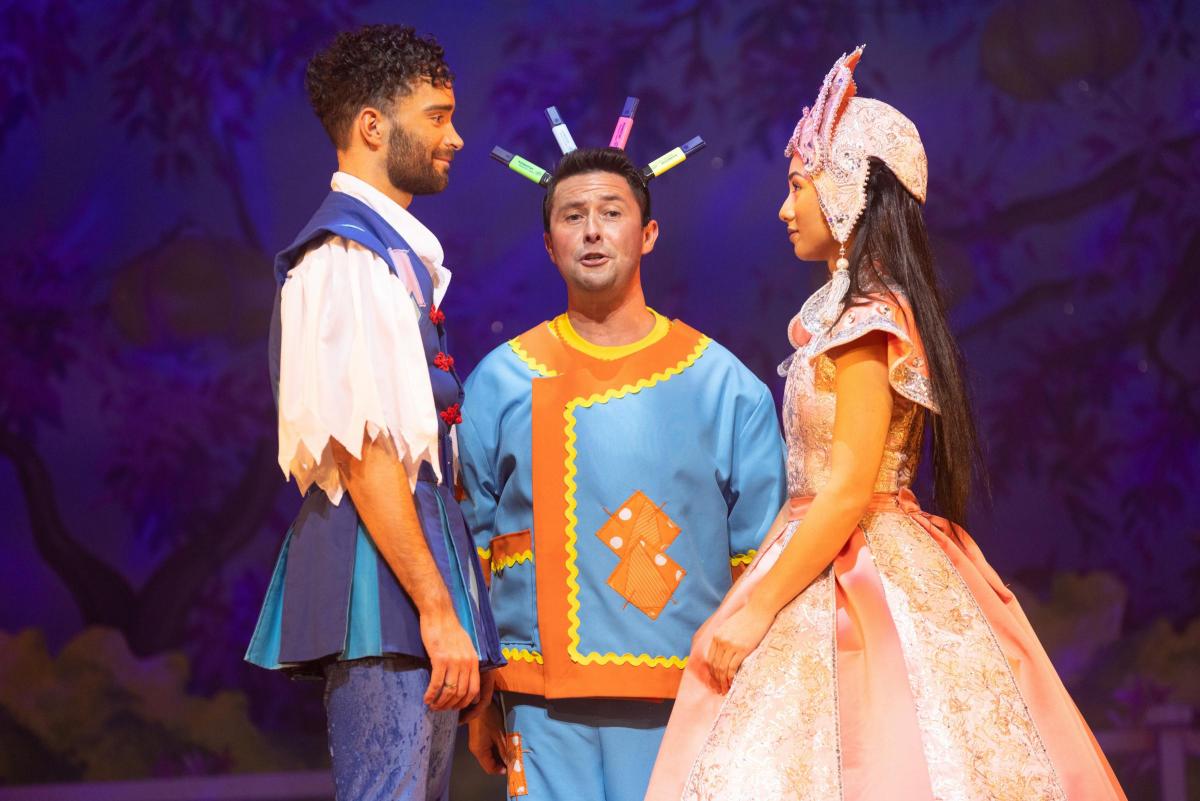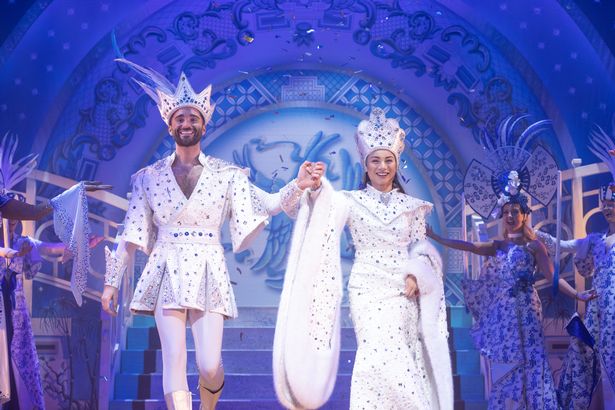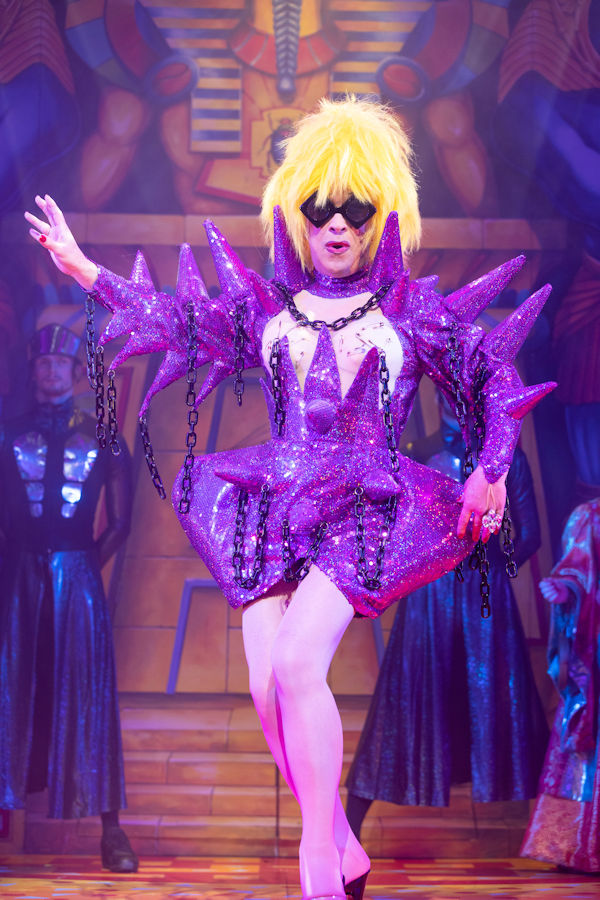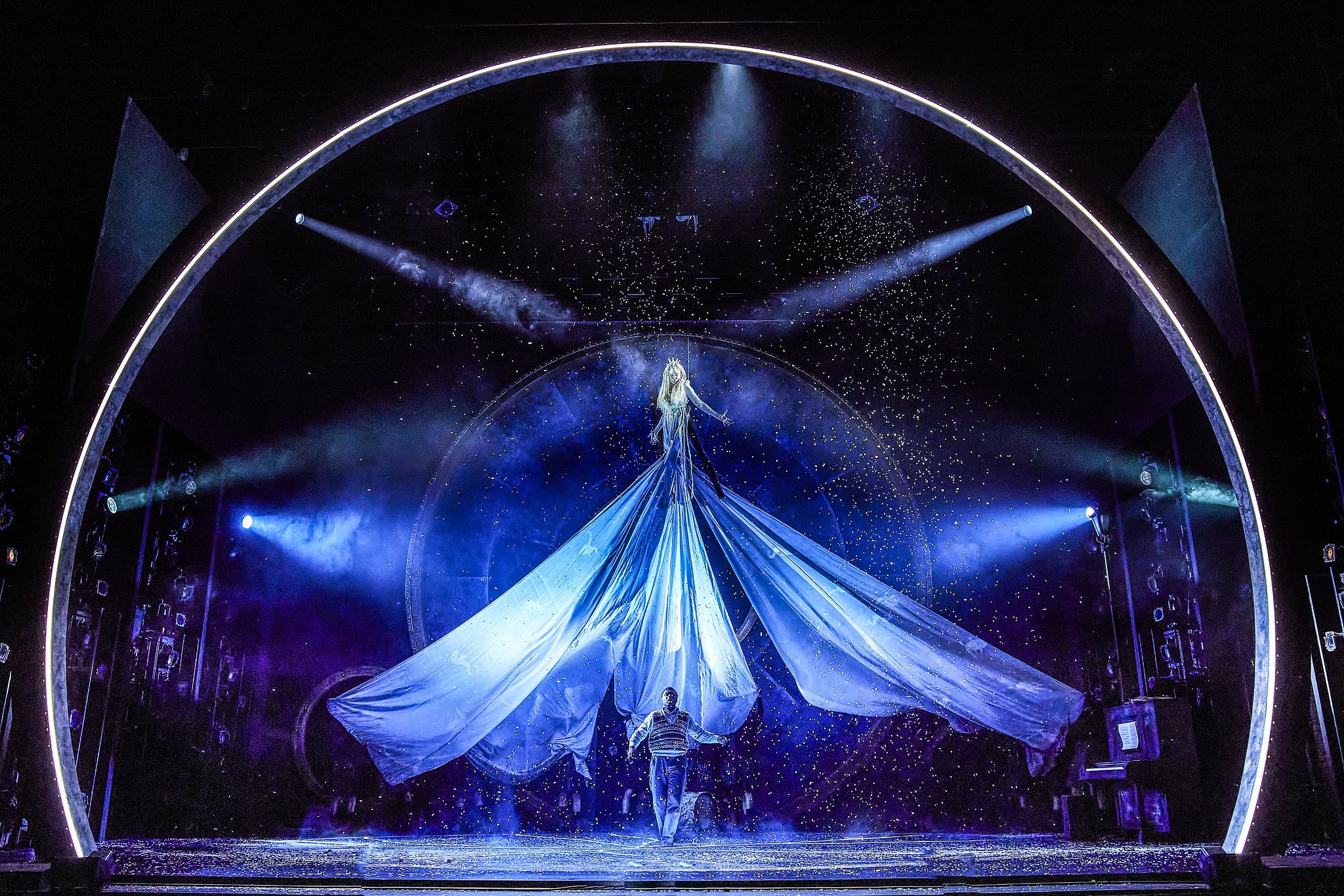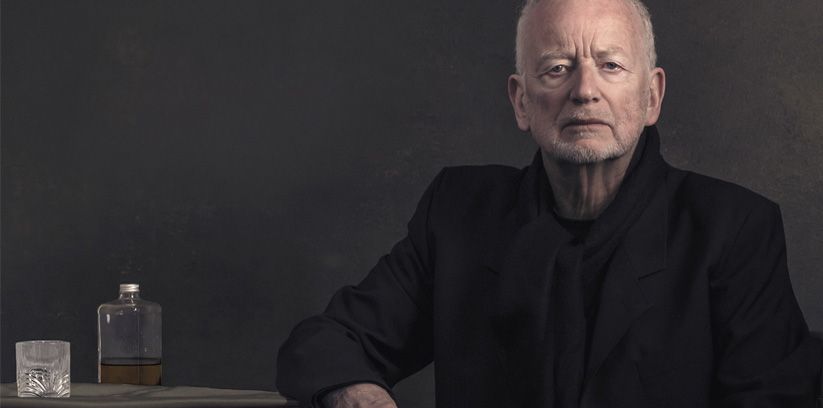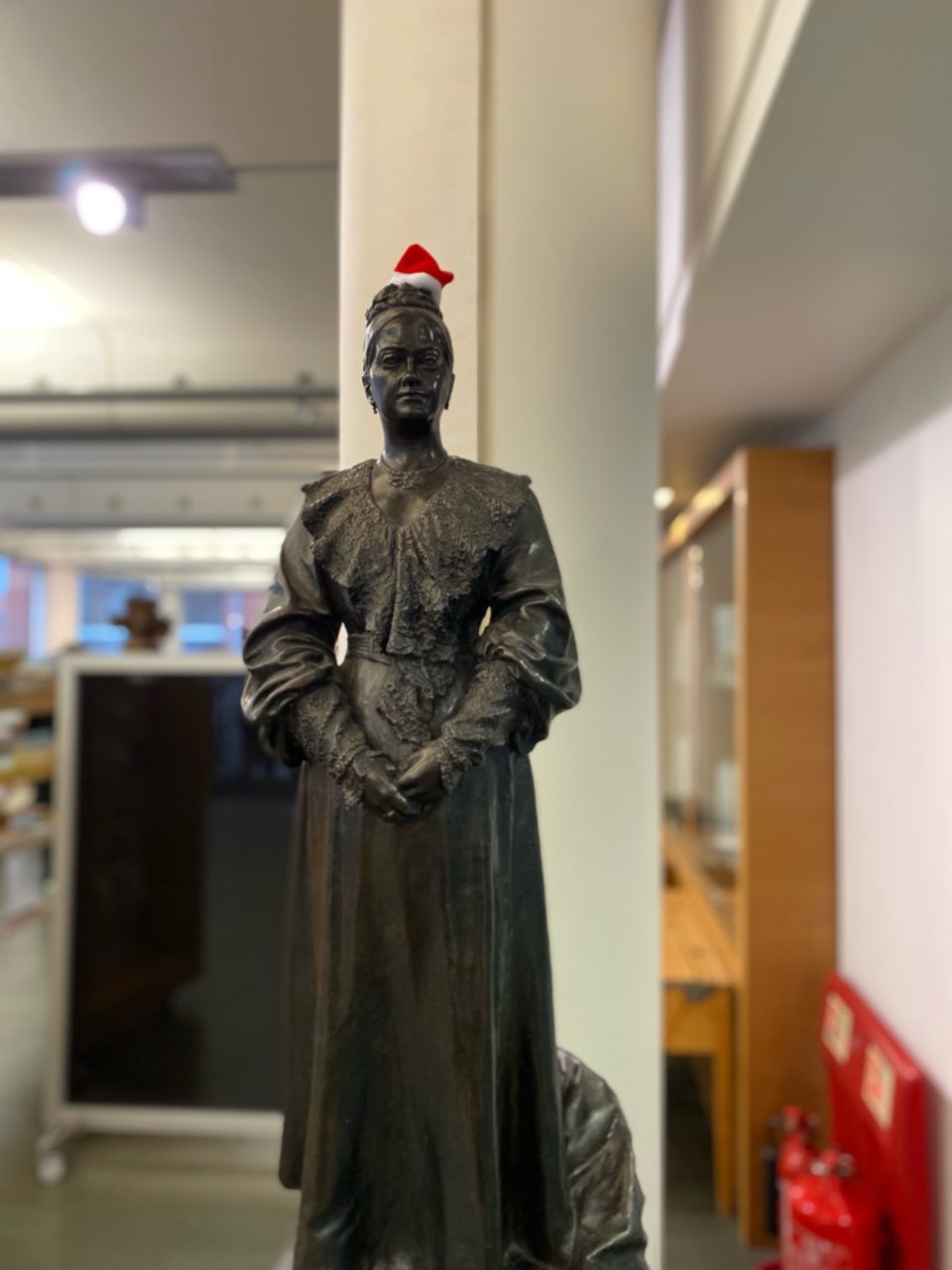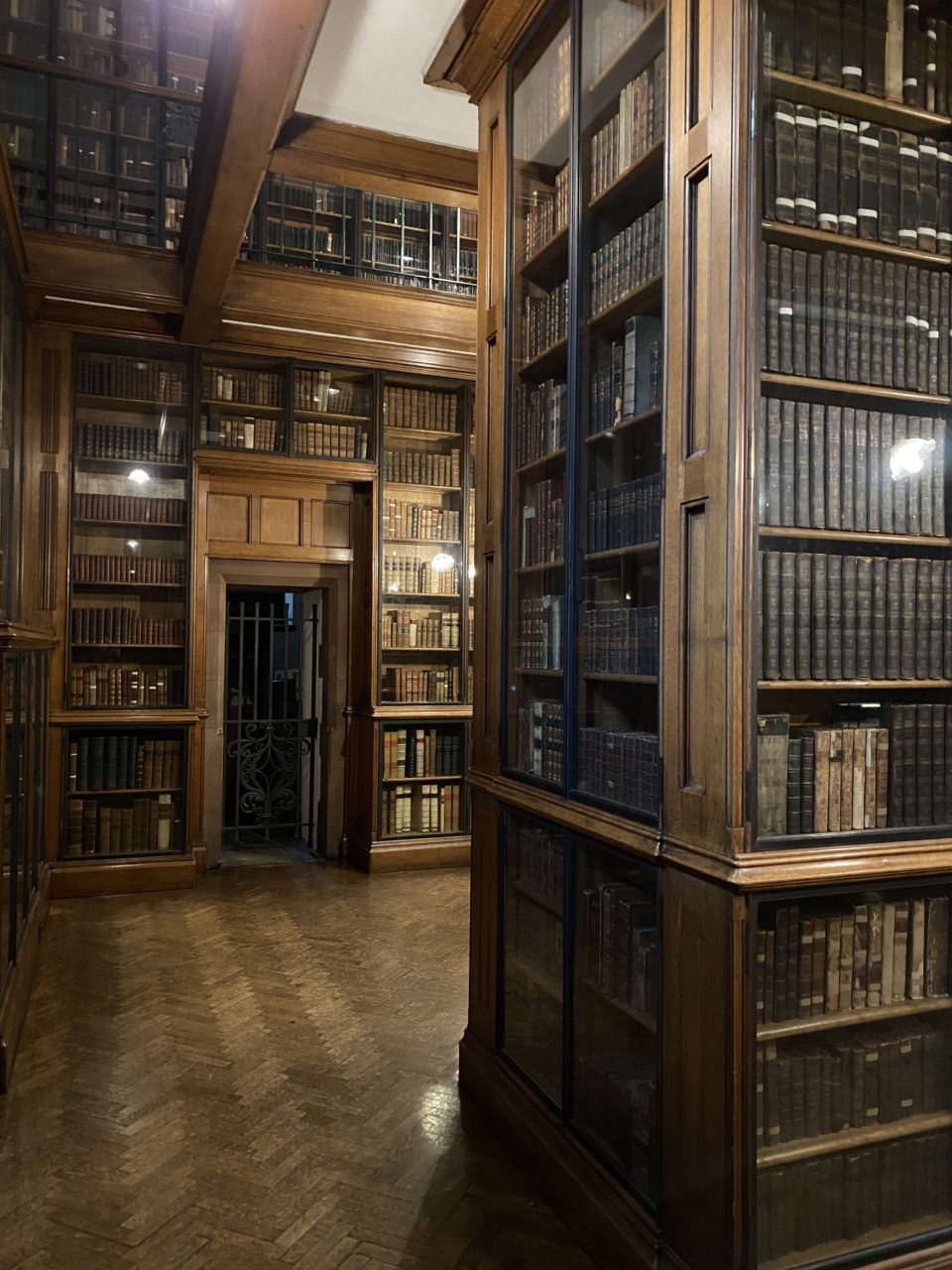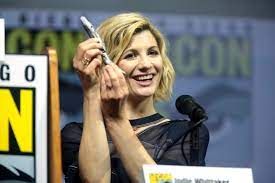Ian McDiarmid needs no introduction, but for the few people unfamiliar with this Scottish star of both screen and stage, he is best-known for playing the Emperor in the Star Wars franchise. McDiarmid recently starred in The Lemon Table, which toured the country and played at Manchester’s HOME Theatre to rave reviews. An Olivier and Tony winner, McDiarmid is no stranger to the stage – but this intimate, one-man show allowed the star to show off a different side to him. I was lucky enough to sit down with him for an intimate and insightful interview.
How does it feel to be back in the theatre performing to a live audience?
Well, great – yes is the answer to that you’re not surprised to hear! I mean, that’s my job- standing in front of people every night with any luck performing some really good text.
The big reason to be back is, you know, we’ve all been on our own, one way or another. And particularly with this play, which you probably know I made out of two short stories, and they’re two characters who really need an audience too, they can’t wait to express what they’re going through, so it connects in that way, and what you saw last night happened to connect with audiences too.
And going back to that, so what’s the importance of the theatrical experience? So in terms of being actually in a theatre, and seeing a live performance, how important is that to you?
It’s its own thing isn’t it, it’s not like anything else. Live theatre or live concert or whatever is, you know, real human beings performing to real human beings in that particular moment in time, but in the theatre anything can happen and it’s why I do it, frankly.
Not being able to do it for a while has been frustrating, but it’s been frustrating for everybody else. But it gave us a chance to really work on it in detail and, of course, not just me but the whole production team, so on, as you probably saw last night, they’re all great, they’re all of the first rank so it’s been a very happy experience.
And it’s nice for me to be back in Manchester because I’ve spent a lot of good times here. I started off as an AFM at the library many years ago, and then for a while I was an associate director at the Royal Exchange and also, around the Almeida we brought productions up here – a couple of plays with Michael Grandage’s direction. So I love Manchester and I always feel at home here. And certainly the audience’s at HOME, at this particular venue have made me feel that too so it’s been a great experience.
That’s great to hear. So talking more about the play last night, what drew you to it? What appealed to you most about adapting the two shorts from The Lemon Table?
It sort of started when I was asked to read the second one, The Silence, (the one about Sibelius) on the radio years ago just when Julian [Barnes] had published the book. They broadcasted it during the end of the proms concert. I guess the music being played was at least one Sibelius symphony. So I did it and I had a letter from Julian afterwards saying that he liked what I did and I suddenly felt well, maybe there’s a way of making a play out of it.
And then it lapsed and I didn’t think about it. And then two years ago, and this was pre-pandemic, I looked at the book again and I found another story which was also in direct address, which makes things easier. And I thought well, maybe this could be paired and they could do those two together and it might make some sense.
They’re both about many things and they have some things in common, not least silence. The concert goer in the first play is desperate for it so he can enjoy the music and, of course, Sibelius is desperate in a sense not to have it because for the last 50 years he’s been unable to write his next symphony. So it’s about the value of silence, and why it might be good and why it could be bad.
Of course, it occurred to me that that’s particularly appropriate at the moment and I’ve enjoyed being quiet some moments during the pandemic and then yearning for company in others so that all fitted nicely. And when the theatre’s wanted to do it and banded together to make it possible that was good … I really felt keen to do it outside of London because not everything has to happen in London so all the theatre’s joining together was great and I’ve had a very nice time on the road.
So are you enjoying touring then? Getting back out there?
Yes I’ve always liked touring, I’ve always liked to get out to audiences in different parts of the country. I’m sort of the robes of the Vagabond school of acting and I like to move around and not be in a fixed place. I think that’s probably true emotionally and intellectually as well but it’s certainly true about getting around Britain.
Most of the places I’ve been to before with a play except here, of course, which is new, but I’m really struck by this theatre, by the way it’s run. I think it’s really exciting. Also, I was hearing what happened during the time of the pandemic and how they just went outside and created this new space that kind of adventure – adventurism is what we need, we need more of that.
Also they seem to want to do big things, which is always reassuring. I think this is a time for big things in the theatre. Not for, you know I speak as someone who’s in a one man show at the moment, but I think people should be bold, I think they should do things that are only possible in the theatre. And that’ll keep people coming back in even larger numbers, because some people are slow to come back, and we understand that. Even though all of the venues make it as easy as possible for them in terms of comfort and safety and so on, but some people are still sensitive and I understand that.
Yeah, I completely agree. So would a return to HOME one day be on the cards for you, if you ever had an opportunity to come back?
Well if there’s another show, as long as I’m doing other shows they’d want I’m always keen to be invited!
That’s great to hear. So looking back again to the source material, I’m interested to hear which character you found more relatable because obviously you spoke about the need for silence during the pandemic. So would you relate to the cantankerous old concert goer or the tortured artist of Sibelius?
I think what I like most about them is that they’re completely different.
As far as relating goes, there are aspects of all of them that I could relate to. I think if you were asking me for an overriding response it would be, they’re both – in different ways – talking about people’s last days, particularly the second one. And Julian Barnes’ writes, I don’t know how well you know his work, but all his novels to an extent are about not going quietly towards death, but also acknowledging that death is something that exists and that needs to be talked about. So I feel that very strongly. That’s what happens in the play. Less so in the first play.
Although they’re both about relationships that no longer really function the way they initially did. Andrew in the first play, well, we don’t know that they’re no longer together, perhaps he’s no longer alive, a lot have assumed that to be the case certainly. They’ve certainly broken up, perhaps as the result of the terrible action of throwing somebody down the stairs. He couldn’t have gotten away with that could he? He must have at least been charged with Grievous Bodily Harm, probably Manslaughter so that would have complicated lives even more.
And of course Sibelius is complicated by the fact that he’s an alcoholic. And his wife is doing her best to prevent it from being you know, hiding the whiskey and so on. But the other really interesting thing about that was also alcohol, and it’s true about Sibelius, it was a source of inspiration, as well as dissatisfaction so occasionally it would stimulate his imagination. But as he got older, he drank more of course, and the opposite turned out. But I think that’s an interesting idea, that the thing about both plays and Julian’s work is that they’re always full of fresh ideas, they’re always moving forward. And my job is to take the audience forward with these ideas. And that’s exciting.
It’s always true in the theatre, but particularly during that first play, their reaction is very important to how I react because the beginning of it is a bit like stand up but it’s unlike stand up in that it’s entirely tightly scripted. And Julius’ words which I’ve edited only by taking some phrases out, but by and large, I haven’t touched up because he has his own music, which is a great thing so you try and play them as you would a piece of music and that’s something I have to do and the interpretation varies from night to night, but it’s from the same groundwork, exactly as if you were playing a piano concerto or something like that.
Also, it’s about music, which you probably picked up, and it’s about the value of music, and how important it is clearly to Sibelius but also to the first character. It transforms him, it takes him out himself. And I dare say for a lot of people during the pandemic, listening to music, and other forms of art, but I think particularly music gave people somewhere to go inside them.
Yeah, I completely agree with everything you said. I’m not familiar with Julian Barnes’ work but I want to be more after seeing this. I found it very fresh.
Yes you should read him, he sometimes writes novels and he sometimes writes books which are half novels and half not but one book he wrote called Nothing to be frightened of, which is about death, it’s a sort of dialogue between him and his brother, who’s a philosopher, and it’s very funny. It’s a common theme [death] in most of his works and he also writes very well about music. He wrote a very good book (semi-fictionalised again) about Shostakovich called The Noise of Time and it’s about Shostakovich’s battle with Stalin so he’s interested in the interaction between the artists and the political situation they find themselves in.
So how in terms of your wider career and going forward, would you like to be doing more stage work post pandemic? Would a return to film be on the cards? Obviously, you returned to Star Wars just before the pandemic.
There’s nothing on the cards at the moment, but I would like to do this play, The Lemon Table, and I’d like to keep doing it in other contexts, maybe take it abroad if we’re ever allowed. That was always the idea at the beginning, we were going to start it at the Edinburgh festival… and then the pandemic hit so we didn’t do it and they invited us back this year. But interestingly enough, most of the venues were outside, and it’s nothing against outside venues, but as you probably realised it’s almost impossible to create silence outside so that kind of undermined what the play’s were trying to do.We were very happy when Sailsbury first of all, took it on board and then they arranged the tour. But yeah I’d like to be doing it in different contexts so that’s what I’m thinking about at the moment.
As far as Star Wars is concerned, yeah, who knows? I mean, I’ve been surprised three times on those movies by them saying “come back and do this, do that”, so who knows? I do think he’s completely dead now. I think Daisy really destroyed me once and for all but of course, as you know, what they used to call their ‘heritage series’ – or spin offs to call them by their proper name – so my character is around, so if every now and again they might choose to phone me up ask me to participate.
Now that Hayden [Christensen]’s back, who I saw last week, who came to the play, there’s a new series [Obi-Wan Kenobi] that I’m not allowed to talk about but I said “do I get a mention?” He said, “oh, maybe” but I can tell you I don’t appear in it but you know maybe one day I will. All the phone calls I’ve had about Star Wars have been a complete surprise so there might be another surprise on the way, but not so far.
That’s great to hear. Obviously as a massive fan, I would always love to see you return in whatever capacity but going back to yourself as an actor, how differently do you approach a play like The lemon Table versus a role like Star Wars because, obviously they’re two completely different things, but do you find yourself having any similar like methods in terms of getting to character? What’s your process in general, really?
No, not really. I mean, film is completely different from theatre. As you saw last night, I’m there transmitting feelings, emotions, in the moment and in a movie, you’re not really transmitting, you’re allowing a photograph to be taken. If you start transmitting the camera won’t like it so you just have this feeling that the camera photographs. In something like Star Wars this can be a bit heightened because you’re not playing naturalistically – or certainly my character wasn’t, some of the others probably were, so it’s different in that way, but it has its own demands.
The thing they both have in common is that you have to learn the lines! And sometimes with Star Wars you only get them at the last minute, and in the last film, they may be constantly changing so you have to be alert to that and JJ Abrams was great to work with – wonderful, enthusiastic, humorous person – and he half wrote it so he was always changing as he went along so you had to keep up with it. But that was good, because it kept it fresh and alive. I didn’t feel I had to get him right every time.
George [Lucas] is quite different. It was a fairly tight script. I mean, you could make suggestions about how you might change it but by and large it was already programmed into how it was going to end up. Although the editing process is, as you know, a lively one, and anything could change at any time so then you just make sure you knew the lines as well as you possibly could within the time span in which you were given to learn them.
Yeah, that’s fascinating to hear. So you said that theatre acting versus film acting is very different so what do you enjoy most about the theatre? Is it the audience? Is it the stage? Is it the movement or just the freedom?
It’s all of those things. Yes it’s being onstage in front of a live audience who change nightly. Also sometimes a friend comes, sometimes a critic comes, but by and large they’re anonymous. You don’t know who they are. That’s great too. You don’t know how they are going to respond. If they don’t respond at all then it’s depressing, but fortunately that hasn’t happened on this show so far. Sometimes they can respond too much but you’re in charge of that, you control the laughter when it happens as well – if you don’t want to laugh you can work out how not to get one as well as perhaps how to get one.
If you have a script that’s lively then a great thing to do is not to get in the way of it, you know, to allow it to have its life because it already does. It has a very precise rhythm and texture so you try to do your version of that and that’s the excitement. Whereas in the movie it’s very different.
When you’re in the theatre you’ve got time to rehearse by and large – we had two years really, not that we did! I have no excuse not to arrive with all the lines known and all the ideas but the thing is that it all changes when other people come into the room with different suggestions, then the set arrives – not that it was very complicated, but it’s a table and two chairs and what was really fascinating was I mean, you know, having seen the play, you know, what the Lemon Table means because it’s talked about in the second play, but also to our delight the Lemon Table was also resonant in the first.
When I was adapting it I hadn’t realised the connection that of course Andrew worked in the furniture department of the VNA so the table in the room is one that he chose and perhaps varnished himself and so on. So it is as resonant in the first play but once you start doing theatrically other things, you know, one thing led to another and so the metaphor became bigger and originally when the standing on the hill I thought the set would include some kind of rostrum, and then I thought that no that’s stupid, no, it has to be the table. And when we talked to Paule Constable, the lighting designer, she said “don’t worry, I’ll make you stand on the hill if you stand on the table.” And I thought “yes, of course you will with your lighting.” So that’s all we knew. And of course that makes it even more resonant so he’s standing on this table, where people have discussed death. It’s also a kind of rostrum. It’s kind of a scaffold, the stage itself is the scaffold as you know so it had all sorts of reverberation. And when that happens when you’re doing a play like this one, you say oh, great things are going up and with any luck this as a chance of doing something.
How did you feel about having a simple set? What was it like?
I mean, that was all it needed in the table, two chairs, but of course it’s more complicated than that. In the second it’s a bit like a Scandinavian painting, the designers designed the curtains and the painted floor and so on, so that it felt more like Finland, or like Sibelius’ home. Then it really went into its own, having been fairly flat and straightforward in the first place so it was good to think that, you know, theatrically it would move, not just in terms of the story or the characters, but also in terms of look and with any luck also that would stimulate the audience. So even if it’s just being a table and two chairs it’s theatrically, visually, very alive. And I had no idea that that would be how it would end up but of course I’m thrilled that it did.
From my perspective, it really worked because it allowed your fantastic performance to just make the audience feel that it wasn’t like we were watching it, we were actually in the room with you.
That’s great, yes, and HOME as a theatre offers you that. I mean not all theatre’s do, and certainly not all new theatre’s, but it’s a beautifully designed space. I’m very pleased that it’s proscenium. Proscenium theatres, for actors, are the best because you’re in total control. You’re on the stage and the focus of the audience is directly on you. If you’re in the round you’ve got to keep moving sometimes because you’re standing in front of people, and that’s not a good reason to move. A good reason to move is because the feeling, the emotions of the play demands it and for the proscenium theatre that’s nearly always true. And HOME is ideal in that respect. It’s great and it’s relatively small but it has three levels. I think that’s great as well. I guess it’s a triumph of theatre design.
Yeah, I mean, I was on the bottom floor towards the back, but I had no issue hearing or seeing you or feeling the power of the performance so I will definitely be returning should I be afforded the opportunity.
That’s good, that’s good. I’m glad to hear that.
So we’ve discussed the relatability of the characters, but which one is more fun for you as an actor? Is it the kind of comedy or more the heavy drama?
Well because they’re so different they’re very equally satisfying to play. I mean, the first one is because he’s unpredictable, you know, he’s manic frankly, and the audience responds to him every night in a different way. To go along with the absurd series they sometimes identify with the frustrations and sometimes it’s like the withdrawal from his mania so that’s always interesting. Whereas the Sibelius character is more straightforward and his relationship with the audience isn’t as direct – although it becomes more direct as he finds himself talking about himself more and more and for us it is more fun when he drinks more!
It’s not a good answer to your question but I haven’t really got one because I enjoy doing them equally. And I like the fact that the second one, I mean, as I say it’s “all time”. I go out, I put a coat on and the scarf, that’s all, and I come straight back on and I have to make sure I can do it all in time for this great cause, and indeed the lighting to hit me at the right time. And that’s exciting in itself. It also means I can use my lower register, which is a good thing as far as I’m concerned. So it stretches me.
Yeah. That’s a great answer. I mean, I could see you were having fun, but I’m glad to hear you enjoy both roles. So what would you say is your favourite role you’ve ever performed or pick one that particularly stands out to you?
It’s difficult to say, we always say the one we’re doing now don’t we and that’s sort of true. If that’s the one you’re living with it becomes part of your life when you’re acting. I don’t know if you’ve read my CV but I’ve got a long list of parts that I’ve played and a wide variety of people. Like last night, they’re two completely different people, you couldn’t be more opposite and I suppose that’s what I’ve liked that I’ve been able to do. You really moved from different characters from one to another all the time.
One of the favourites was, again another play, a series of monologues, it’s a masterpiece by Brian Friel, the Irish writer, called Faith Healer. I did it in London, Dublin, and on Broadway, and that was interesting to different audiences. And it’s three monologues about three people who on stage never meet. They tell the story a bit like Rashomon, from their own point of view and the fascination for the audience is they’re trying to piece together who’s telling the truth. I played a sort of seedy but charming, lovable agent who used to have a variety act and because I was brought up on Scottish variety, I suppose that’s the one that maybe I enjoy the most. I was also surrounded by two great actors, certainly in America, Ralph Fiennes played the other part and so did Cherry Jones. I was on stage with two great actors, but of course I never got to meet them – we did a lot of backstage but the whole point is they’ve never met and they’re telling their stories which interconnect while you work out who’s lying!
That sounds fascinating. It’s interesting to talk to you because obviously, I’m coming from being most familiar with your work from Star Wars, but you’ve obviously got this illustrious Cv of theatre and TV and film and which I feel like it’s really important for our readers to know that because I feel like it’s great that you’re willing to talk to a student newspaper. So thank you.
Yeah of course, you know, you’re the future! I also feel I’m one of the generation that feels guilty about you lot. You know what are we leaving you? Not much! And people always say “oh young people they can learn a lot from you”, I always feel like I learn a lot from young people actually. You know, their freshness of approach, their differences about life from the kind of young person I was many, many years ago. So I’m always happy to talk to young journalists, young artists, anybody and I also feel a kind of responsibility. I’m not wanting to give advice, but if there’s any help I can give I’m very happy to do it.
That’s great to hear. So, to segue a bit into slightly different topics – in terms of the pandemic and your pastimes, what did you find yourself getting up to? Because I mean, personally, I watched a lot of classic films. So how did you spend your time?
Yes, I watched a bit of live streaming [The National Theatre live]. It was tough to watch while regretting that I wasn’t actually in the theatre while they were doing it but they were regretting that they weren’t in front of an audience too! I’ve read a bit and I have this place in Scotland on the coast where I enjoy being isolated, it’s not entirely isolated, but it’s on the sea and on good days all you hear is the birds and the waves so when it came to lockdown, it wasn’t a new experience for me because I actually thought that when I bought this place, I was looking for somewhere exactly like that. So self imposed lockdown was over rehearsing for it in a sense, but of course it went on too long. You start to think I really want to meet somebody, I want flesh and blood and contact, etc. But what else did I do? Well, it’s a great place to walk. The Scottish coast and the Scottish hills and so on. Also the air is fantastic. So I was able to indulge in all of that. But like everyone else, after a while you get too much of a good thing. So I’m pleased we are getting back. I just hope we continue to go back.
So just on the pandemic theatre, you said earlier that theatre faith requires “big bold things”. So what type of things would you like to see from possibly young or returning directors and actors?
I want young ideas. I want people to come forward and persuade good theatre’s like this [HOME] to do them; things that they haven’t perhaps done before but things with lots of people, with lots of energy, lots of life! Big new plays would be the best but let’s have some of our great, big, old plays back – reinterpreted by the upcoming generation because if that doesn’t happen then the theatre won’t continue to live. That’s what you guys have got to do.
You know, take a great play by Shakespeare, say King Lear or something, and bring your own sensibility to it and persuade people that what you’re going to do with it is respectful of the greatness of Shakespeare but also reinvented for the times. I think there’s a lot of that essentially going on and we need more of it. I think the theatres will naturally be cautious because they’ve lost a lot of money, and a lot of them are in a very parlous financial situation so it’s difficult to take a risk. But I think just from experience of running The Almeida all those years ago, I think if you take a deep breath and take a risk, you’re more likely to survive than if you play safe all the time. It’s probably true in most places but it’s certainly true in the theatre!
An interesting question I’ve got for you: so recently Ian McKellen, so he’s gone back and is doing Hamlet again but obviously, as an older man. Is that something you’d ever be interested in? Revisiting roles you did…?
No, absolutely not! I mean, I understand why he did it and good luck to him but no, no I, I won’t be trying to play 50 years younger than myself. I want to play roles of my age, maybe slightly younger, but because that’s the generation I’m in, that’s what I am. There’s no reason why people shouldn’t do anything. It’s about doing things well, you know – people of colour playing parts that weren’t written for them – that’s all great. The only thing you want is for the people to do the best they can. All the other things don’t really matter because when we’re watching an actor on stage of whatever gender, what you want to be is taken to another place by their skill and artistry. Whoever’s doing that, you know, whatever group they belong to, if they’re doing that to the best of their ability and with a kind of brilliance, you’re off. It doesn’t really matter about age or gender or colour.
Yeah. That’s great to hear. So I mean, you touched on it just earlier, but have you got any advice for young aspiring actors or directors in film or theatre?
I don’t really want to presume to give advice, I just think, if people say, “Well, should I be an actor?” You say, well, you asked that question, and the answer must be no, because if you wanted to be an actor, you wouldn’t ask the question. You’d be setting about doing it because certainly from my experience it’s a kind of need, it’s within you. You feel you have to do it.
I didn’t know what it was when I was a kid and at school I put my hand up for the school play and I didn’t even know I put my hand up – I thought “oh I put my hand up, I don’t usually volunteer for things”. And it was because it was something that I thought, not just I could probably do that but oh, that’s part of who I am. So yeah, I think it’s easily said and not easily done but if you feel it’s part of who you are, you’ve got to set about finding a way to do it. Otherwise, you’ll spend the rest of your life being relatively unhappy.
Great to hear, so I’d just like to close it with anything else you’d like to say to our readers? Any final words or advice?
I don’t think so. Really. I mean, you’ve covered a lot. So I’m quite happy to leave it at that if you are.
Yes. Yeah, that’s brilliant fans. Thanks for doing this. Yeah, it’s for me personally. It’s amazing. To talk to someone I’ve admired for so long. And also, again, I touched on it earlier but talking to us as a student newspaper. This is stuff The Guardian usually gets so again, thanks for doing that. I’m very happy to do it. And I’m glad you asked me, thanks!
I’m very happy to do it. And I’m glad you asked me, thanks!
For more Ian McDiarmid content, check out my review of The Lemon Table!
